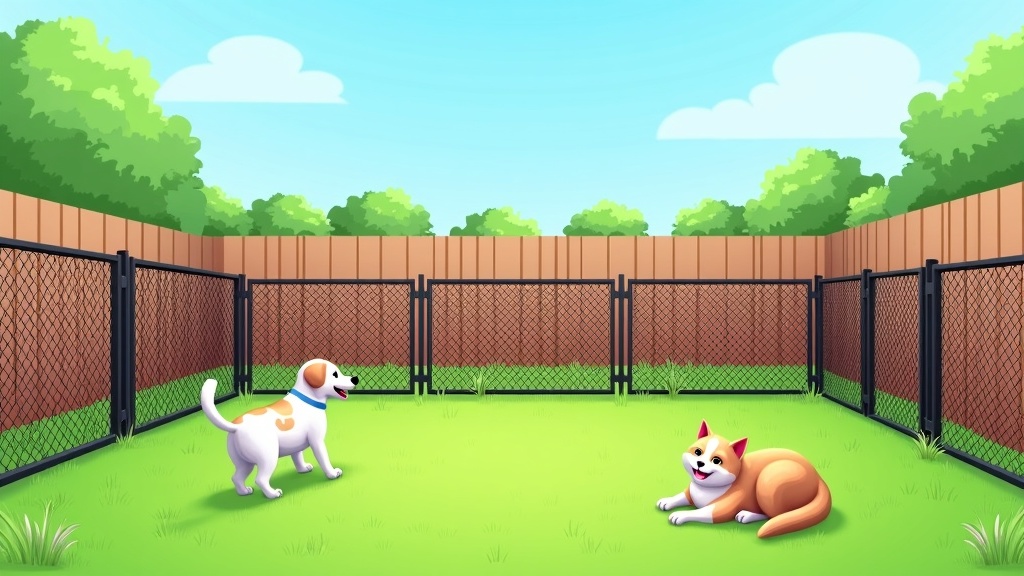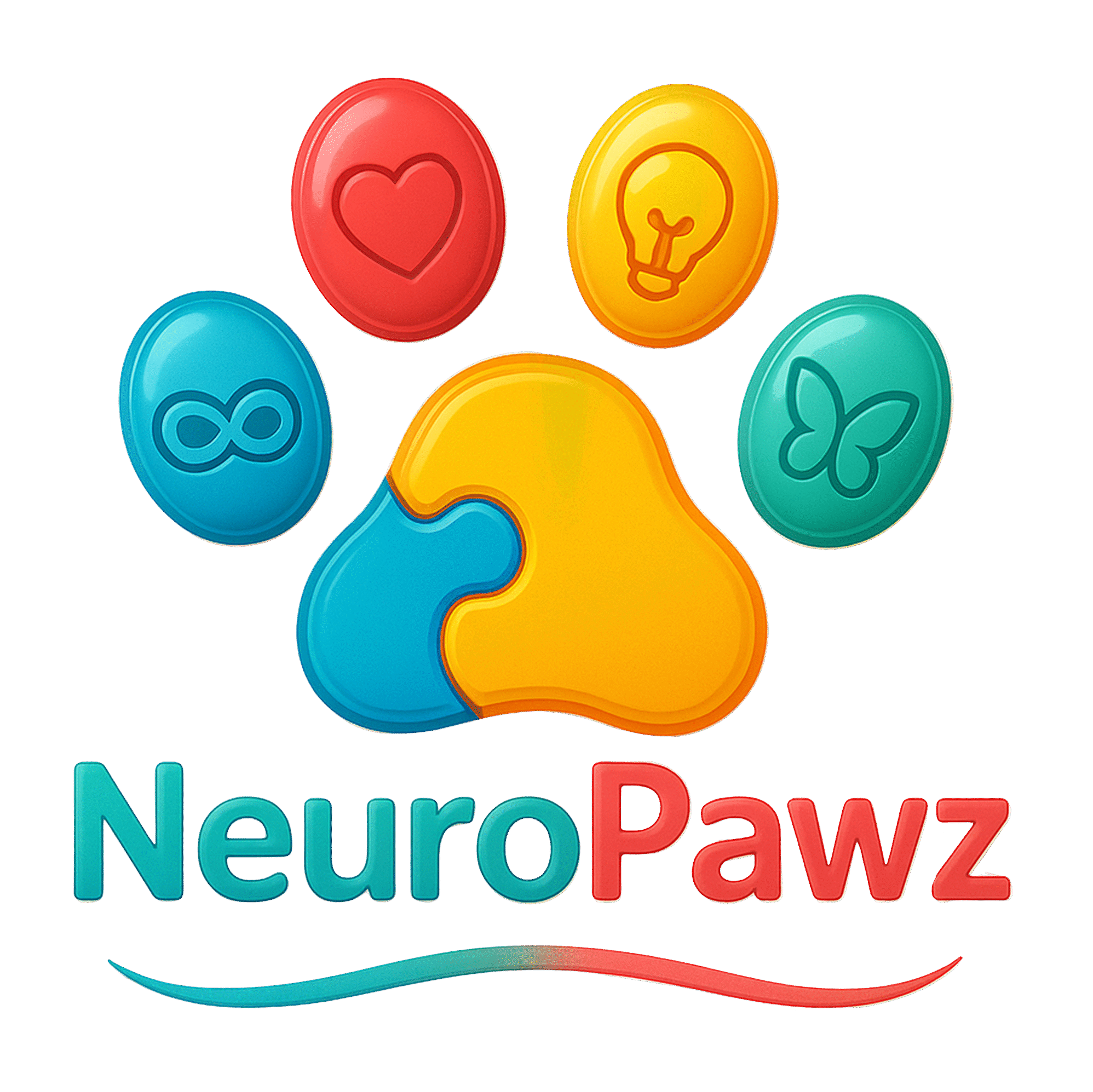Outdoor pet fences and containment systems can ease a ton of stress, especially if you’ve got a hyperactive pup, a creative escape artist cat, or you’re neurodivergent and need predictability in your environment. I’ve spent plenty of afternoons comparing outdoor pet fences, muddling through setup directions, and calling in friends for fence-building weekends, so I know firsthand how much smoother daily routines get when your outdoor space is truly secure. Having the right setup goes a long way in providing both freedom for your pets and peace of mind for you. Here’s what you’ll want to know before making your decision.

Understanding Outdoor Pet Fences: Types and Uses
Outdoor pet fences aren’t all created equal. With options ranging from old-school wood and metal fences to high-tech invisible systems, the type that’s right for you depends on your pet’s species, size, energy, sensory needs, and how hands-on you want to be. I’ve put together a quick breakdown so you can get a feel for what’s out there and what might match your needs best.
- Physical Fences: Traditional wood, vinyl, wire, and chain link fences offer strong, clear boundaries. They work for almost every kind of pet and create a visible limit, which is great for visual thinkers or anyone who likes a clear structure.
- Wireless and Invisible Fences: These use radio signals or underground wires to make a virtual boundary. Your pet wears a special collar that gives a warning beep or gentle static correction if they get too close to the edge. They’re handy if you want to avoid changing your yard or your living situation doesn’t allow building something permanent.
- Portable Playpens and Panels: These temporary setups are super useful for travel, apartment patios, or those who switch yard layouts often. Bonus—these usually set up faster and are easier to adjust based on sensory preferences or accessibility needs.
Every option has its ups and downs. Physical fences offer steady security but come with maintenance needs and might stretch your budget. Invisible fences are barely noticeable but need good training, and not every pet gets the hang of them. Portable options bring flexibility, though they might not work for dogs with serious escape skills.
Key Features to Consider in an Outdoor Pet Fence or Containment System
Picking the right pet fence is about more than price or hype. Here are some key points I always look at, especially as someone who values structure and finds sensory overwhelm tough to handle:
- Height and Strength: Dogs who love to jump or hefty breeds with lots of muscle need taller, sturdier fences. Cats with parkour moves? Go for catfriendly fence toppers or fully enclosed runs.
- Sensory Friendly Materials: For neurodivergent pet owners (or pets!) sensitive to sound, certain wire and metal fences can rattle in the wind, which can be either interesting or overstimulating depending on your sensory profile. Quieter materials like vinyl or wood could be calmer choices.
- Visual Clarity and Safe Borders: Some pets—and some neurodivergent folks—feel better with clear, simple structures and no confusing gaps. Slotted picket fences can cut back on anxiety by providing visible lines, while solid panels block out distractions.
- Easy Installation: If DIY isn’t your thing, or you get annoyed by unclear directions, look for fences with snaptogether panels or companies that offer setup help. Extra points for clear, easy-to-follow instructions and a support team that actually answers.
- Maintenance Level: Outdoor fences deal with everything from blistering sun to freezing sleet. Lower maintenance choices, like coated wire or vinyl, tend to last longer and need less fixing, which is great if you struggle with executive function or busy routines.
- Flexibility and Portability: For renters, frequent movers, or those with changing needs, collapsible fences and playpens you can move or store quickly are super convenient.
Factoring these features in ahead of time can make routines smoother and keep everyone less anxious—even humans who get overwhelmed by too many options or fuzzy boundaries.
Steps and Tips for Setting Up an Effective Pet Containment System
After choosing your fence, the way you set it up matters—a lot, especially if you have a neurodivergent mind that craves predictability, order, or stepwise routines. Here’s how I usually approach things:
- Measure Your Space: Map out the entire perimeter and tricky corners before you buy anything. Sketch a diagram, use different colors for tough spots, or set timers to break the project into easy parts. Breaking big jobs into smaller bits is gold for ADHD brains (and honestly, for everyone else too).
- Prep the Area: Double-check for hazards or hidden tunnels—loose soil, roots, rocks, or objects could help your pet escape. Tidying up first also means you won’t lose focus tackling mess halfway through setup.
- Follow Installation Steps: Go one step at a time, especially if the instructions are a pain. Lay all the parts in order, check the steps against online videos, or watch someone else put together the same fence before starting. Lots of companies now offer easy-toread PDFs or handy videos, which calm setup jitters.
- Test for Security and Comfort: After setup, walk around the whole fence and wiggle each post or panel. Let your pet check it out while you watch. For invisible fences, train your pet using simple, positive cues—visual and audio clues can really help both pets and neurodivergent owners.
- Adjust and Adapt: If you need to tweak things, that’s fine! Sensory comfort and safety can change over time; add cushy panels, extra soft zones, or visual markers if something feels “off.” Take breaks and ask for a hand if needed.
Modifying instructions or your setup routine to suit you or your pet is absolutely fine. Predictable routines can tone down stress, especially if changes or surprises make things harder.
Challenges and Solutions for Common Containment Problems
- Escape Artists: If your pet loves to dig, leap, or push, reinforce weak spots with extra supports, longer posts, or dig guards. Double gates add a layer of security. Some animals appreciate visual or tactile cues—like textured mats along the edge—to feel grounded and avoid testing the walls.
- Neighbor Noise and Distractions: Busy roads or loud neighbors can stress out pets who are sensitive to sound—same goes for people. Solid panels or privacy screens can reduce noise and distractions for both pets and owners.
- Property Restrictions: If you rent or have to follow HOA rules, you’ll probably need a less permanent solution. Modular panels or wireless fences are usually easier to move and less likely to cause problems.
- Weather and Upkeep: Walk the fence boundary regularly to spot gaps, rust, or fallen branches, especially after storms. If forgetfulness is your Achilles heel, add fence checks to your calendar or routine (a regular Sunday fence walk, maybe) so you can stay on top of it.
With a dash of creativity, the right supplies, and some community backup, most challenges can be solved—especially if you’re a neurodivergent pet parent who relies on routine and structure to keep stress down.
Everyday Benefits of Reliable Outdoor Fencing
- Freedom for Pets: A secure fence lets your pet run, sniff, and just be themselves without you watching every move. This freedom is especially important for anxious, high-energy, or neurodivergent pets who benefit from independent playtime and making their own choices.
- Peace of Mind: Knowing your fence is solid can take a huge worry off your mind. If you find repetitive noise or unknowns overwhelming, being able to trust your barrier’s strength can mean you finally get to relax outside with your pet.
- Easier Social Visits: Fencing lets you host pet playdates, or invite neurodivergent friends who might be stressed by unclear boundaries, which makes get-togethers much more chill.
- Routine and Predictability: For pets and humans who like structure or have a hard time with surprises, fences make routines reliable. Less need for last-second changes makes everyone feel more comfortable and happy.
Reliable fencing doesn’t just keep your pets physically safe—it lifts confidence, brings happiness, and gives the whole family more opportunities to enjoy the outdoors together.
Frequently Asked Questions
What’s the best type of fence for neurodivergent pet owners?
For many neurodivergent folks, strong, visible fences—like wood or coated metal—are easier on the eyes and the brain. Add-ons like soft colors, textured touches, and clear panels only make the space more inviting.
Do invisible fences really work for cats?
Invisible (or underground) fences can work for cats if you train them gently with positive reinforcement and use lightweight collars. Not all cats will adapt, and neurodivergent cats might need special cues or more gentle steps.
How can I make regular fence maintenance easier?
Setting reminders, breaking up tasks, and inviting someone to help you can keep things from piling up. If big chores don’t vibe with you, spreading the work out over several days can make it less stressful.
Wrapping Up: Choosing the Best Fence for Your Needs
The right outdoor pet fence gives you back your backyard, lets your pet enjoy freedom safely, and brings more predictability into each day, especially for neurodivergent pet parents managing daily routines. Whether you go with a classic wooden fence, a techy wireless option, or a creative custom fix, keep both your pet’s needs and your own comfort front and center. With a bit of careful planning and support, you’ll soon see pet and human alike soaking up time outdoors with zero stress—and all the fun that comes with it.
